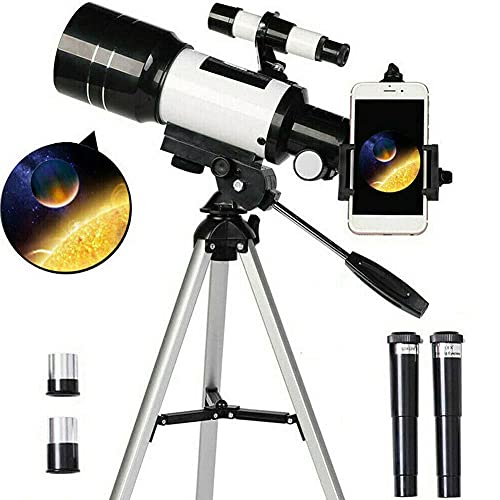The Different Types of Telescopes
Telescopes have played a crucial role throughout history in expanding our understanding of the universe. From the groundbreaking discovery of celestial bodies to answering fundamental questions about space, telescopes have been instrumental in unraveling the mysteries of the cosmos. There are several different types of telescopes, each with its own unique design and purpose. In this article, we will explore five of the most commonly used telescopes and their functions.
Refracting Telescopes
Refracting telescopes, also known as dioptric telescopes, are one of the oldest types of telescopes. They use a lens to bend and focus light, providing a magnified view of distant objects. One of the most famous refracting telescopes is the Hubble Space Telescope, which has captured stunning images of galaxies, nebulae, and other celestial bodies. This type of telescope works by gathering light through the objective lens and then focusing it onto the eyepiece. Refracting telescopes are known for producing sharp and clear images, making them ideal for observing planets and the moon.
Reflecting Telescopes
Reflecting telescopes, also known as Newtonian or catadioptric telescopes, use a concave mirror instead of a lens to gather and focus light. The mirror reflects the light onto a secondary mirror, which then redirects the light to the eyepiece. This design allows for larger and more powerful telescopes to be built, as mirrors can be made much larger than lenses. Reflecting telescopes are widely used in astronomy and are particularly effective for studying distant objects such as galaxies and nebulae. The largest reflecting telescope currently in operation is the Gran Telescopio Canarias, located in the Canary Islands, with a mirror diameter of 10.4 meters.
Catadioptric Telescopes
Catadioptric telescopes combine elements of both refracting and reflecting telescopes. They use a combination of lenses and mirrors to gather and focus light. The mirrors in a catadioptric telescope fold the light path, allowing for a compact design with a long focal length. One of the most popular types of catadioptric telescopes is the Schmidt-Cassegrain telescope, which is known for its versatility and portability. These telescopes are often used by amateur astronomers due to their ease of use and ability to produce high-quality images of both celestial objects and terrestrial subjects.
Radio Telescopes
While optical telescopes rely on visible light to observe celestial objects, radio telescopes use radio waves. These telescopes are specifically designed to detect and amplify radio signals emitted by objects in space. Unlike optical telescopes, which use lenses or mirrors to collect light, radio telescopes use dish-shaped antennas. The signals received by the antenna are then processed and converted into images or data. Radio telescopes are instrumental in studying radio waves emitted by faraway galaxies, pulsars, and other astronomical phenomena. The Arecibo Observatory in Puerto Rico, with its giant radio telescope, is one of the most well-known and powerful radio observatories in the world.
X-ray and Gamma-ray Telescopes
X-ray and gamma-ray telescopes are used to observe high-energy electromagnetic radiation emitted by celestial objects such as black holes and supernovae. These types of telescopes operate differently from optical and radio telescopes, as X-rays and gamma-rays cannot be focused with traditional lenses or mirrors. Instead, they use specialized detectors to capture and measure the particles and radiation emitted by these high-energy sources. Some of the most notable X-ray and gamma-ray telescopes include the Chandra X-ray Observatory and the Fermi Gamma-ray Space Telescope. These telescopes have provided valuable insights into the extreme conditions and events occurring in the universe.
By understanding the different types of telescopes and their capabilities, scientists and astronomers are able to study and explore the universe in greater detail. Each type of telescope has its own advantages and limitations, making them suitable for specific research purposes. Whether it’s observing planets, distant galaxies, or high-energy phenomena, these telescopes continue to expand our knowledge of the cosmos.






